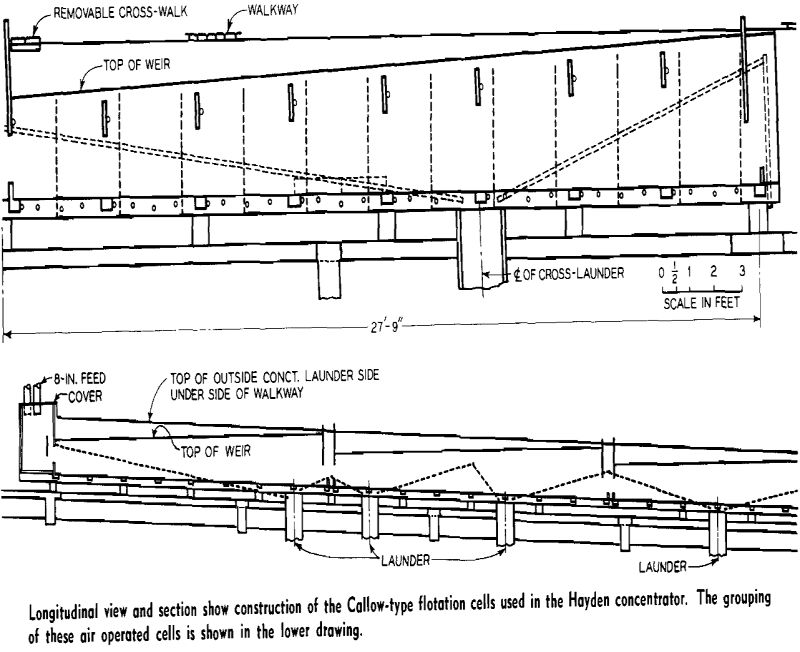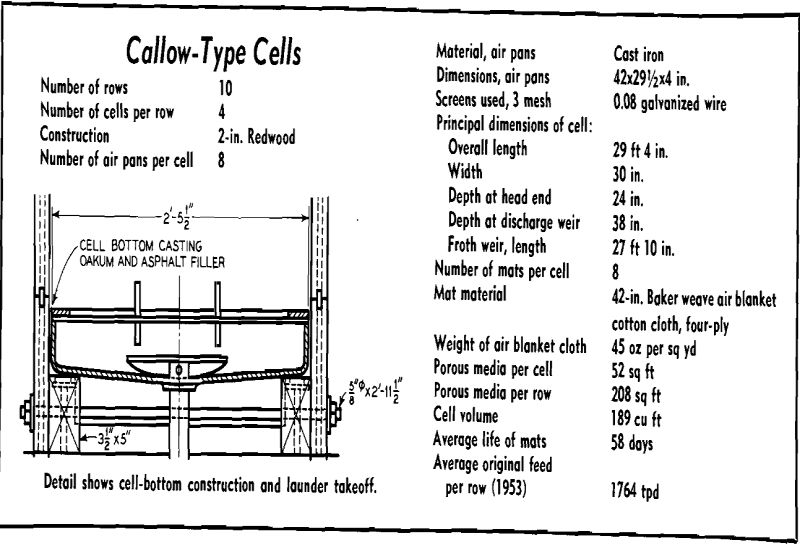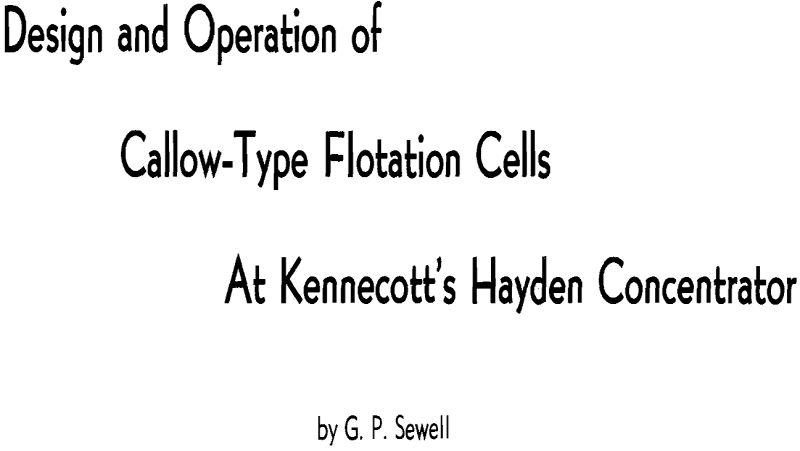Callow-Type flotation cells, with various modifications, have been employed at the Hayden concentrator since 1917. Other flotation machines, such as matless-air and mechanically agitated types, which have been tested in competition, have failed to handle tonnages or give metallurgical results equal to the modified Callow-type cells on the Ray ores.
While experimental work was conducted at Hayden on cell bottoms constructed of porous concrete, the Chino plant in New Mexico had been experimenting with a modified Callow-type cell, using mat bottoms consisting of a special heavy cotton porous medium.

The flotation plant was originally designed to handle 500 tpd of ore per row, and tests showed that this was the optimum rate of feed per row during the period that ethyl xanthate was employed as the collecting agent. When higher alcoholic xanthates (amyl and butyl xanthates) were substituted for ethyl xanthate, it was found that the feed rate per row could be increased to 2000 tpd with even better metallurgical results. This improvement reduced the size of the flotation plant to approximately 25 pct of its original size and resulted in a proportional reduction in the amount of air, labor, and maintenance required.

The present flotation plant consists of a roughing circuit in which the modified Callow-type cells are used, and a concentrate cleaning circuit in which Fagergren flotation machines of a level type are employed. A rougher concentrate from the upper half of the Callow cells is pumped to 56-in. Fagergren cells for primary cleaning. The rougher concentrate from the lower half of the Callow cells is returned to the primary pump sump in closed circuit with the rougher operation. The cleaner tailings from the 56-in. Fagergren primary cells are returned to the primary sump with the original flotation feed.

